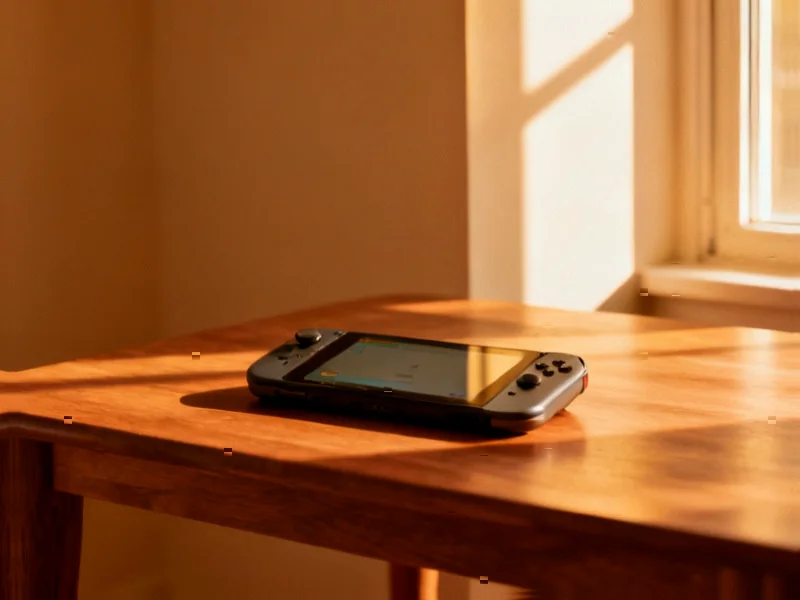According to Gizmodo, Microsoft’s Xbox handheld strategy faces significant challenges despite the recent launch of the Asus ROG Xbox Ally X. The $1,000 device features a “full screen experience” (FSE) version of Windows that centers the Xbox app as a gaming hub, but still suffers from fundamental issues including sleep/wake problems, performance limitations, and interface inconsistencies. Testing revealed that while the FSE provides modest performance gains of 3-7 fps over standard Windows, it can’t match Linux-based Bazzite OS, which delivered 53 fps in Cyberpunk 2077 benchmarks compared to Windows’ 51 fps despite lower power consumption. Microsoft has kept the FSE exclusive to Xbox-branded devices, while competitors like Lenovo’s $1,350 Legion Go 2 won’t receive official support until spring at the earliest.
Table of Contents
The Inherent Conflict Between Windows and Console Simplicity
Microsoft faces a fundamental architectural challenge that the source only hints at: Windows was never designed for handheld gaming devices. The Windows operating system carries decades of legacy code and desktop-oriented design decisions that conflict with the instant-on, controller-first experience console gamers expect. Unlike purpose-built gaming systems, Windows must accommodate everything from enterprise applications to creative software, creating unavoidable complexity. This isn’t just about interface polish—it’s about core architectural decisions around power management, input handling, and application lifecycle that SteamOS and Bazzite solved by building from the ground up for gaming. Microsoft’s attempt to layer a console experience atop Windows resembles trying to convert a office workstation into a gaming console rather than engineering a dedicated gaming platform.
The Open Source Advantage That Microsoft Can’t Match
What makes Bazzite particularly threatening to Microsoft’s strategy isn’t just its technical superiority—it’s the development model. As an open-source project with passionate community developers, Bazzite can iterate faster and target specific hardware optimizations that Microsoft’s corporate development cycle can’t match. The source mentions installation complexity, but this misses the broader trend: Linux gaming has moved from niche hobbyist territory to genuine competition. With Valve’s Proton compatibility layer maturing rapidly and AMD providing excellent open-source driver support, the performance gap between Windows and Linux gaming continues to narrow. Microsoft’s traditional advantage—game compatibility—is eroding just as their hardware pricing puts them at a significant disadvantage against both traditional consoles and PC handhelds.
The Unsustainable Economics of Premium Handhelds
Both the source’s mentioned devices—the $1,000 ROG Xbox Ally X and $1,350 Legion Go 2—face a fundamental market positioning problem. At these price points, consumers expect flawless experiences, yet these devices deliver compromised performance compared to both traditional consoles and desktop PCs. The handheld gaming market has historically succeeded with either budget-friendly options or premium devices with clear value propositions. At $1,350, the Legion Go 2 costs more than a PlayStation 5, Xbox Series X, and Nintendo Switch combined, yet can’t deliver the plug-and-play simplicity of any of them. This creates a dangerous perception problem: if consumers are paying premium prices but still dealing with Windows quirks and performance issues, the entire category risks being dismissed as overpriced novelties rather than serious gaming platforms.
The Strategic Misstep in Microsoft’s Approach
Microsoft’s fundamental error may be treating handhelds as extensions of their existing ecosystems rather than unique product categories. The Xbox brand carries certain expectations about game performance, interface consistency, and ease of use that Windows simply can’t deliver in its current form. Rather than creating a dedicated gaming OS or significantly modifying Windows core architecture, Microsoft appears to be applying surface-level fixes that don’t address underlying technical debt. The company’s historical strength in backward compatibility and ecosystem integration becomes a liability when it prevents them from making the bold architectural changes needed for competitive handheld gaming. Meanwhile, community-driven projects like Bazzite demonstrate what’s possible when developers prioritize gaming performance over legacy compatibility.
Can Microsoft Fix This Before It’s Too Late?
The window for Microsoft to establish leadership in the PC handheld space is closing rapidly. With Valve’s Steam Deck establishing the performance and usability benchmark, and multiple manufacturers adopting SteamOS or Linux alternatives, Microsoft risks being relegated to compatibility-mode gaming rather than setting the standard. The company’s strongest potential advantage—seamless Xbox Game Pass integration—is undermined by the very Windows limitations that make the experience frustrating. If Microsoft cannot deliver significant improvements to the FSE experience quickly, they may find themselves in the uncomfortable position of watching open-source alternatives achieve what their multi-billion dollar development efforts cannot. The growing documentation and community support for solutions like Bazzite suggest that enthusiasts are already voting with their installations, and mainstream consumers may not be far behind.



